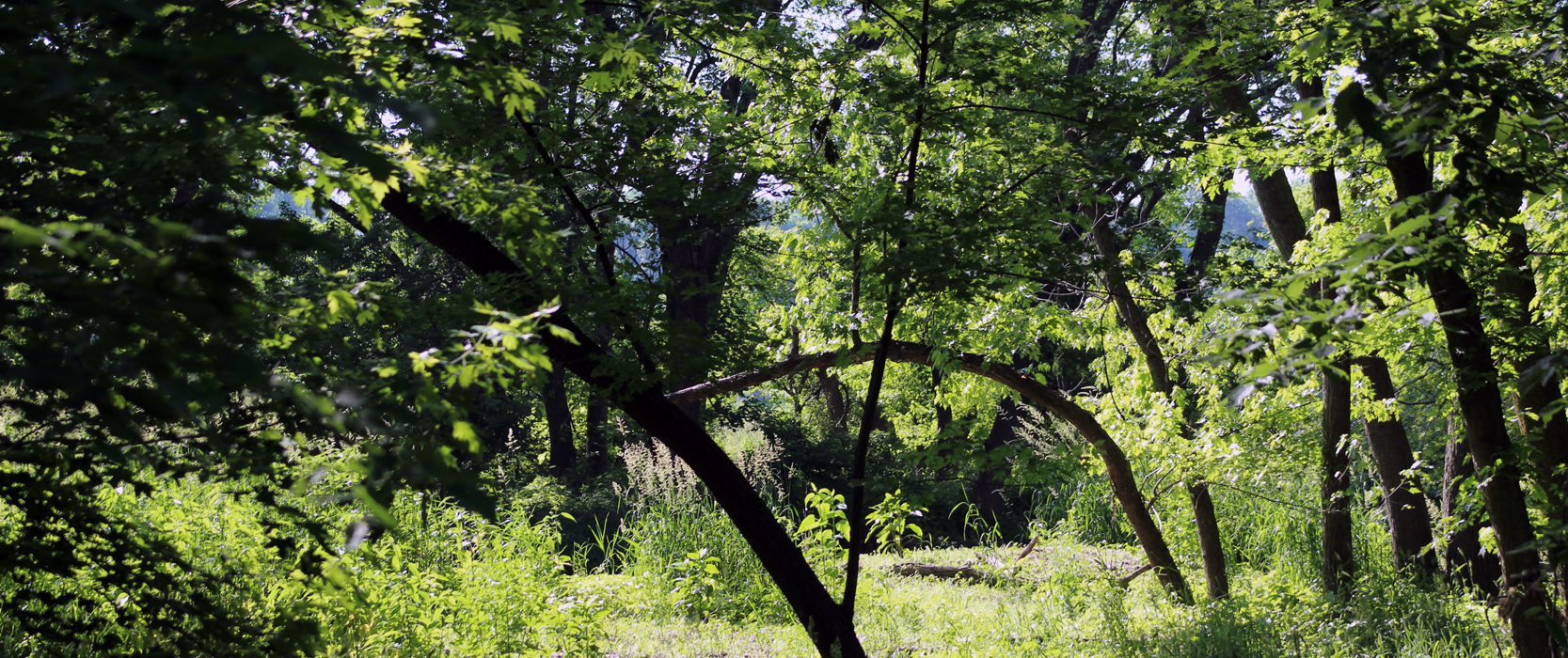Fourmile Creek Greenway

In amongst this 450+ acre streambank woodland corridor lives an abundance of animal and plant life. The Fourmile Creek Greenway consists of land that was previously developed for residential use. The area that was developed lies within a 500-year flood plain. With the purchase of this land, Polk County Conservation is restoring it to its natural landscape made up of native prairies, woodlands, savannas, and wetlands. Significant restoration work will began in 2020 and will take 5-7 years to complete.
Things to Do:
- Bird Watching
- Mushroom Hunting
- Controlled Bow Hunting
- Future Des Moines City Parks
- Future Central IA Water Trails Access
Visitors may collect the following for non-commercial use if the plant is not harmed:
- Nuts
- Fruit
- Edible mushrooms
Removing plants and cutting wood is illegal here.
Restoration of the Fourmile Creek Greenway
Fourmile Creek has been prone to flooding throughout its history. This has impacted countless residents, prompting evacuations and destruction to property. In order to minimize these impacts, extensive efforts have been taken by various city and county staff to remove at-risk houses and other structures from the floodplain.
In 2010, a Greenway Master Plan created a strategy for what to do with these now vacant parcels. This strategy outlined a plan to convert these areas to a more natural state, which would provide water quality and flood benefits. Polk County Conservation was selected to head this effort due to their experience and expertise. Almost all of the parcels bought out by the City of Des Moines in the lower portion of the Greenway have now been transferred to Polk County Conservation to complete restoration and management.
Restoration Plans
Polk County Conservation, and many other partners, plan to transform the Fourmile Creek Greenway to a corridor of natural areas that provides wildlife, water quality, and flood reduction benefits. This will create green space that will allow people to experience a serene, natural environment in the heart of Des Moines.
The current landscape is mainly turf grass left over from the many houses that once lined the streets. While turf grass may be better than concrete, it still does not provide many of the benefits listed above. Moving forward, these areas will be converted to native prairie, which provides all of these benefits and more. Along with the planting of native prairie plants, many other restoration techniques will be used in the Greenway. Below are some helpful definitions for the management activities referenced in the legend on the map on the opposite page.
Oxbow Restoration
An oxbow is a meander of a stream that has been cut off from the present flow of water. Over time, oxbows fill in with soil and lose the water quality improvement and flood reduction benefits they once had. Restoration of oxbows involves removing the soil that has built up in them over time and allowing them to fill with water once again. A connection to the current stream channel is also created allowing water to back up into the oxbow during large storm events. Oxbows also provide habitat for fish and wildlife.
Prairie Enhancement
Over time, areas planted with prairie can lose iversity and become dominated by just a few of the more aggressive native species instead of a wide variety of different plants. Prairie enhancement is completed by interseeding a diverse mix of native grasses and wildflowers native to central Iowa into the existing planting and mowing the area at regular intervals for several years. The increased diversity of the site will provide wildlife and water quality benefits.
Prairie Planting
Diverse mixtures of wildflowers and grasses native to central Iowa will be planted in open areas that have little tree cover. After seeding, these areas will be mowed 2-3 times during the growing season – for two years – to reduce weed pressure and provide light to the developing prairie seedlings until they become established.
Savanna Planting
Similar to prairie planting, but includes the planting of trees (typically oaks) to create a park-like appearance. Savanna is an ecosystem that is transitional between woodland and grassland (i.e. prairie). The widely-spaced trees allow the prairie plants to receive adequate sunlight and provide habitat for a unique suite of wildlife.
Wetland/Pond
Wetlands are shallow water (less than 4 feet) basins that typically have significant plant and animal communities associated with them. They provide opportunities for flood reduction, water quality improvements, and wildlife habitat. These sites shown on the map have been strategically sited to enhance their potential for flood reduction and water quality benefits. It is important to note that most of the sites shown on the map are tentative.
Woodland Restoration
Much of our woodland acreage in Iowa has been overtaken by invasive shrubs and trees. In addition, suppression of fire and other factors have favored the establishment of shade-tolerant species (e.g. elm, hackberry) to the detriment of more desirable species (e.g. oak, hickory). Restoration of these areas is important to help our native trees thrive and provide appropriate habitat for wildlife. Restoration will involve a process called Timber Stand Improvement (TSI) which includes removing invasive, less-desirable species and selective trees to create a more open understory.
Stream Restoration
Although not shown on the map, we expect to conduct extensive stream restoration projects on Fourmile Creek and its tributaries. Such work typically involves reconnecting the stream to its floodplain by flattening and widening stream banks. In-stream structures may be installed to prevent down cutting and to direct the current in ways which prevent bank scour. The result is a natural appearing and functioning stream that provides greater ecosystem services (e.g., flood mitigation, fish and wildlife habitat, recreation).
TIMELINE
Transforming the current landscape to a more natural state will take time. Converting turf grass to native prairie alone takes 3 to 5 years. Some work has already begun including oxbow restorations, construction of a storm water wetland, and prepping areas for prairie plantings to be established next spring. It is anticipated that major restoration work in the lower portions of the Fourmile Creek Greenway will be completed in 10 to 15 years.
ADDITIONAL INFORMATION



